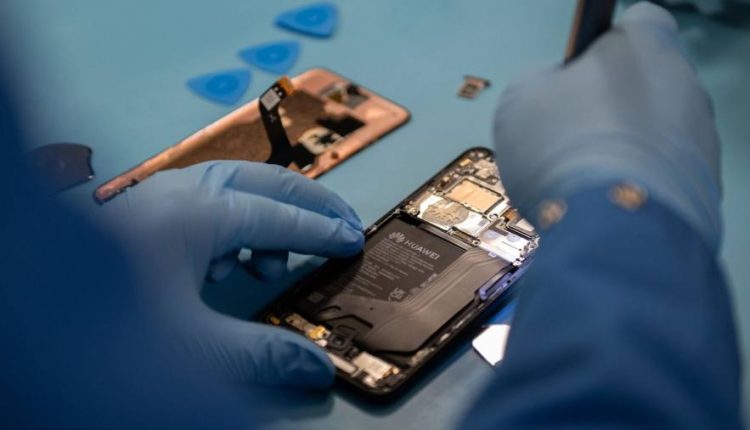Receive free Semiconductors updates
We’ll send you a myFT Daily Digest email rounding up the latest Semiconductors news every morning.
The White House is seeking detailed information on Huawei’s latest flagship smartphone, which analysts have described as an important milestone for the Chinese tech group four years after US restrictions crippled its handset business.
US national security adviser Jake Sullivan said on Tuesday that the US needed to get “more information” on the precise “character and composition” of a chip powering Huawei’s newly released Mate 60 Pro, in answer to a briefing question on whether US controls on exports of advanced semiconductor technology were being thwarted.
While Huawei has declined to reveal details of its suppliers for the Mate Pro, a dismantling of the phone by the consultancy TechInsights last week suggested it contained a 7-nanometre processor made by Semiconductor Manufacturing International Corp. SMIC did not immediately respond to a request for comment.
The partially state-owned Chinese chipmaker became subject to export restrictions three years ago, when the US commerce department said there was an “unacceptable risk” of chip technology being diverted to it for “military end use”.
SMIC was reported to have begun providing chips at the advanced 7nm level of miniaturisation last year, for bitcoin mining, in a development that surprised the industry given US attempts to limit its access to the latest foreign chipmaking equipment.
SMIC’s 7nm chips are the minimum required for rapid processing of data in smartphones and data centres and still lag those at 4nm used in Apple’s current iPhone 14 range. Apple is widely expected to announce the use of a 3nm chip, made by contract manufacturer Taiwan Semiconductor Manufacturing Company, in iPhone 15 models due to be launched next week.
Even though SMIC is a long way from challenging TSMC’s lead, Dan Hutcheson, vice-chair of TechInsights, said the Huawei smartphone “demonstrates the technical progress” the country’s chip sector had made despite not having access to the latest extreme ultraviolet lithography tools.
Washington has sought to block exports to China of EUV machines developed by the Dutch equipment maker ASML, which are required for high yields of chips made at nodes of 7nm and below.
Hutcheson said the development might prompt countries to impose “even greater restrictions than what exist today” to further curtail China’s access to critical manufacturing technologies.
Sullivan said on Tuesday that the US would maintain “its course of a ‘small yard, high fence’ set of technology restrictions focused narrowly on national security concerns” rather than on “commercial decoupling”.
Washington’s sanctions against Huawei in 2019 barred the group from sourcing advanced chips, equipment and software from the US for making 5G smartphones, forcing it to pivot to selling 4G gadgets and focus on its home market.
Ming-Chi Kuo, analyst at TF International Securities, wrote in a research report that the phone’s release could revive Huawei’s smartphone business, which had suffered a collapse in sales following US sanctions.
Kuo forecast that Huawei would ship up to 6mn units within four months of the Pro’s launch, helping it to increase overall phone shipments by 65 per cent this year to 38mn units. Amid a smartphone sales slump, it would become “the world’s mobile phone brand with the most robust shipment growth momentum”, he predicted.
The smartphone’s release has created patriotic fervour over its Made in China credentials, with a social media storm of appreciation and stocks immediately selling out at packed Huawei stores. It has also boosted the shares of Huawei’s component suppliers. The FactSet China Semiconductor Index, which tracks the country’s largest chipmakers, has outperformed Chinese equities, gaining more than 9 per cent since the smartphone was made available last week.
Additional reporting by William Langley and Gloria Li in Hong Kong
Read the full article here

